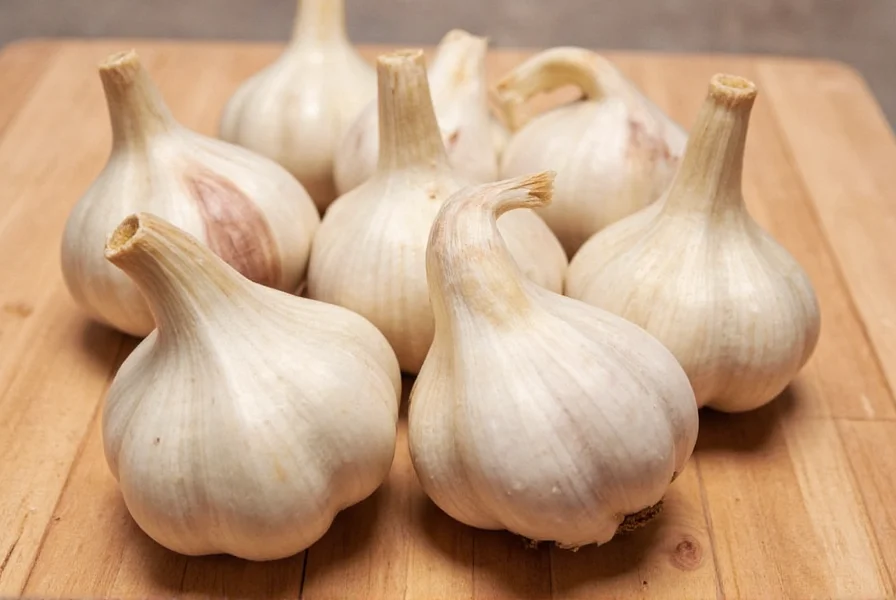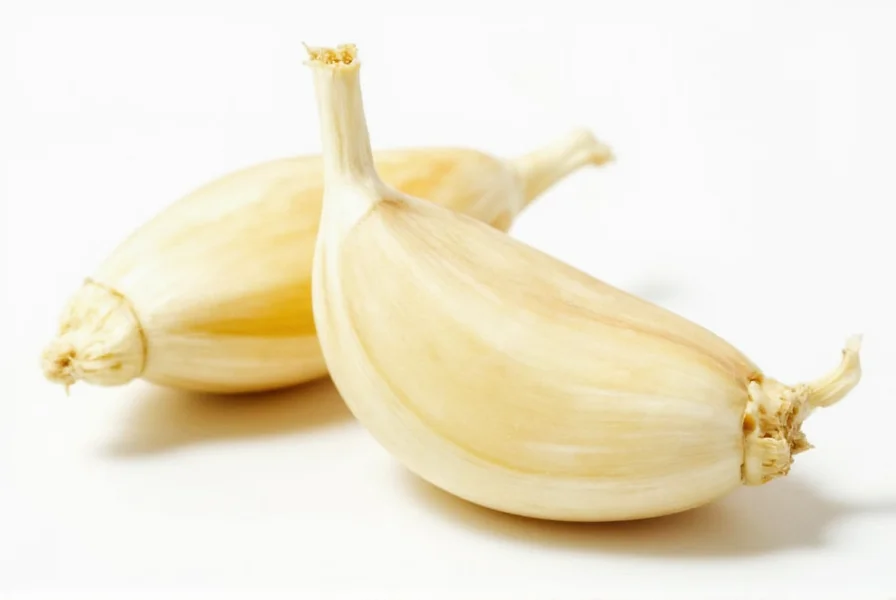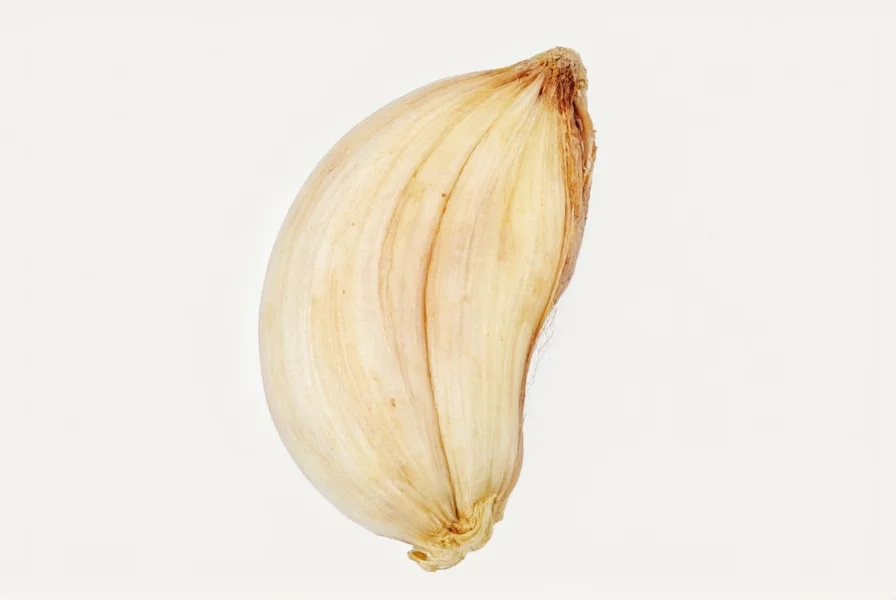Understanding the humble garlic clove is essential for both novice and experienced cooks. This small but mighty ingredient forms the flavor foundation of countless dishes worldwide, from Italian pasta sauces to Asian stir-fries and Middle Eastern dips. While seemingly simple, garlic cloves offer remarkable complexity in flavor, nutrition, and culinary application.
What Exactly Is a Garlic Clove?
A garlic clove represents one individual segment within a garlic bulb (also called a head). Each bulb typically contains 10-20 cloves arranged in layers around a central stem. The cloves feature a distinctive curved, asymmetrical shape with one pointed end and one flat end where they attach to the bulb's base.
Garlic cloves vary significantly in size depending on the variety and growing conditions. Common types include:
- Solo garlic (single-clove varieties)
- Softneck garlic (most common in supermarkets, with 10-20 cloves per bulb)
- Hardneck garlic (typically 4-12 larger cloves per bulb)

Garlic Clove Measurements and Conversions
Accurate measurement of garlic cloves matters significantly in recipe execution. Due to natural size variations, standardizing garlic measurements can prevent dishes from becoming overly pungent or insufficiently flavored.
| Garlic Form | Equivalent to 1 Medium Clove | Weight |
|---|---|---|
| Whole clove (peeled) | 1 clove | 3-7 grams |
| Minced garlic | 1 teaspoon | 3 grams |
| Garlic paste | ¼ teaspoon | 1.5 grams |
| Dried garlic flakes | ½ teaspoon | 1 gram |
| Garlic powder | ¼ teaspoon | 0.6 grams |
When following recipes, remember that garlic clove size variations significantly impact flavor intensity. A large clove can contain up to three times the volume of a small clove. For precise cooking, especially in delicate dishes, weighing garlic provides the most consistent results.
Practical Handling Techniques for Garlic Cloves
Proper preparation enhances both the flavor and usability of garlic cloves. The how to peel a garlic clove quickly question has several effective solutions:
- The smash method: Place the clove on a cutting board, lay the flat side of a chef's knife over it, and press down firmly with the palm of your hand. The skin will separate easily.
- The shake technique: Place cloves in a sealed container or between two metal bowls and shake vigorously for 15-20 seconds.
- The microwave trick: Heat cloves for 10-15 seconds to loosen the skin (use cautiously to avoid cooking).
For consistent mincing, first slice the peeled clove lengthwise, make crosswise cuts, then rock your knife back and forth through the pieces. Adding a pinch of salt during mincing helps prevent sticking and creates a smoother paste.

Nutritional Profile and Health Considerations
A single raw garlic clove contains approximately 4-5 calories and delivers notable nutritional benefits. The garlic clove nutritional benefits include:
- Manganese (2% of daily value)
- Vitamin B6 (2% of daily value)
- Vitamin C (1% of daily value)
- Selenium (1% of daily value)
- Fiber (0.1 grams)
The compound allicin, formed when garlic is cut or crushed, provides many of garlic's celebrated properties. Research suggests potential cardiovascular benefits and antimicrobial properties, though these effects vary based on preparation method and consumption amount. Cooking methods significantly impact allicin formation—raw or lightly cooked garlic preserves more beneficial compounds than heavily cooked preparations.
Storage Methods for Maximum Freshness
Proper storage extends the shelf life of both whole bulbs and individual cloves. For proper way to store garlic cloves, follow these guidelines:
- Store unpeeled cloves in a cool, dark, well-ventilated area (not the refrigerator)
- Once peeled, store cloves in an airtight container in the refrigerator for up to 1 week
- Submerging peeled cloves in olive oil extends refrigerator life to 2-3 weeks
- Freeze whole or minced cloves for up to 6 months
Signs of spoiled garlic include brown spots, green sprouts emerging from the center, soft or mushy texture, and unpleasant odor. While green sprouts are edible, they often indicate aging and may have a slightly bitter taste.
Culinary Applications and Flavor Development
The transformation of garlic's flavor through different cooking methods demonstrates its culinary versatility. When creating dishes requiring fresh garlic clove measurement precision, consider these techniques:
- Raw applications: Provides the most pungent, spicy flavor (ideal for salad dressings and aiolis)
- Gentle sautéing: Creates a mellow, nutty sweetness (add to oil after heating, cook 1-2 minutes)
- Roasting whole cloves: Produces a caramelized, spreadable consistency with mild flavor
- Long simmering: Infuses dishes with subtle background flavor without sharpness
For the garlic clove to teaspoon conversion in your recipes, remember that one medium clove equals approximately 1 teaspoon minced. When substituting jarred minced garlic, use ¼ teaspoon per fresh clove equivalent, as commercial products often contain preservatives that alter potency.
Frequently Asked Questions
How many cloves typically make up a standard garlic bulb?
A typical supermarket garlic bulb contains 10-20 individual cloves, depending on the variety. Softneck garlic (most common in stores) usually has 10-20 smaller cloves, while hardneck varieties typically contain 4-12 larger cloves arranged in a single layer around a central stem.
What's the most accurate way to measure garlic when a recipe calls for 'one clove'?
For precise measurement, weighing provides the most consistent results. One medium garlic clove weighs approximately 3-7 grams. If using volume measurements, one medium clove equals about 1 teaspoon of minced garlic. When recipes specify 'one clove' without size qualification, assume a medium-sized clove from a standard supermarket bulb.
Can I substitute garlic powder for fresh garlic cloves in recipes?
Yes, but with important considerations. As a general rule, ¼ teaspoon of garlic powder equals one medium fresh garlic clove. Remember that garlic powder has a more concentrated, less complex flavor than fresh garlic. It works well in dry rubs and long-cooking dishes but cannot replicate the fresh, pungent quality of raw garlic in applications like salad dressings or garlic bread.
Why does my garlic sometimes turn green or blue during cooking?
This natural color change occurs due to chemical reactions between garlic's sulfur compounds and trace metals (like those in water or cookware), particularly in acidic environments. The compound responsible is chlorogenic acid reacting with amino acids. While visually surprising, this color change is harmless and doesn't affect flavor or safety. It's most common when pickling garlic or cooking with lemon juice or wine.
How can I reduce garlic breath after eating raw garlic cloves?
Several methods can help reduce garlic breath: eating fresh parsley, apples, or lettuce; drinking milk (especially whole milk); consuming lemon juice; or chewing coffee beans. The compounds responsible for garlic breath (allyl methyl sulfide) are absorbed into the bloodstream and expelled through the lungs, so complete elimination takes time. Cooking garlic reduces these compounds compared to raw consumption.











 浙公网安备
33010002000092号
浙公网安备
33010002000092号 浙B2-20120091-4
浙B2-20120091-4